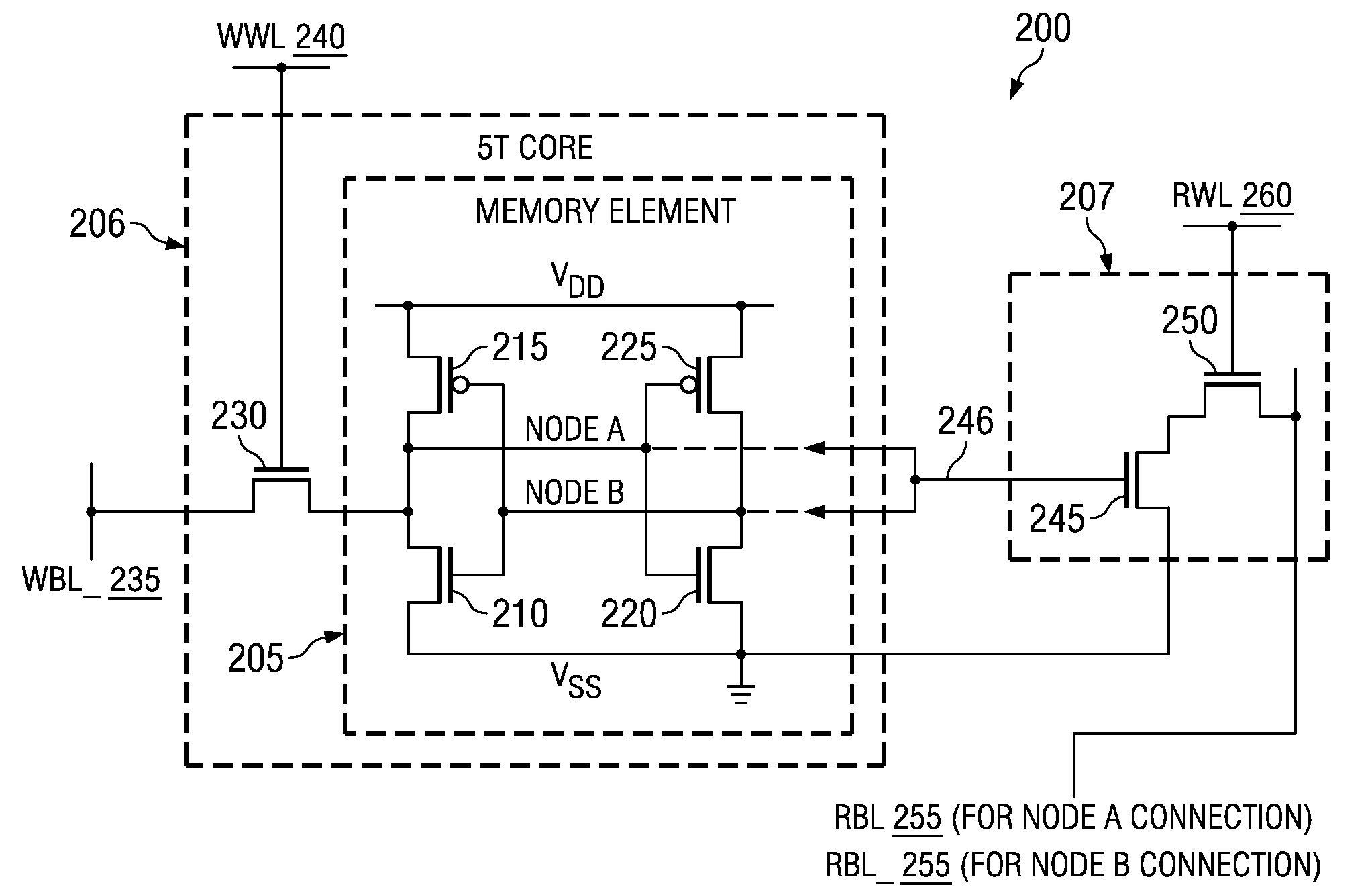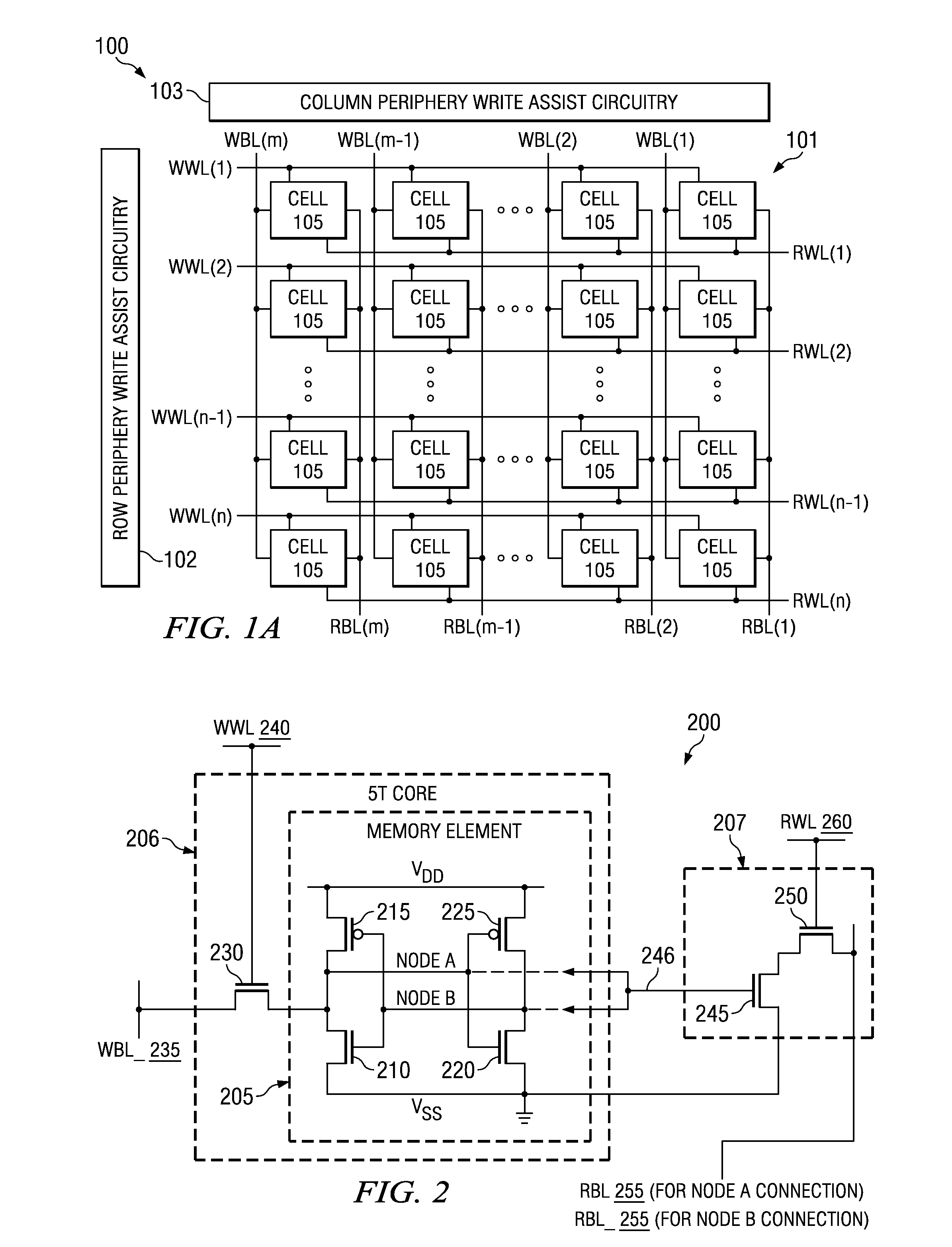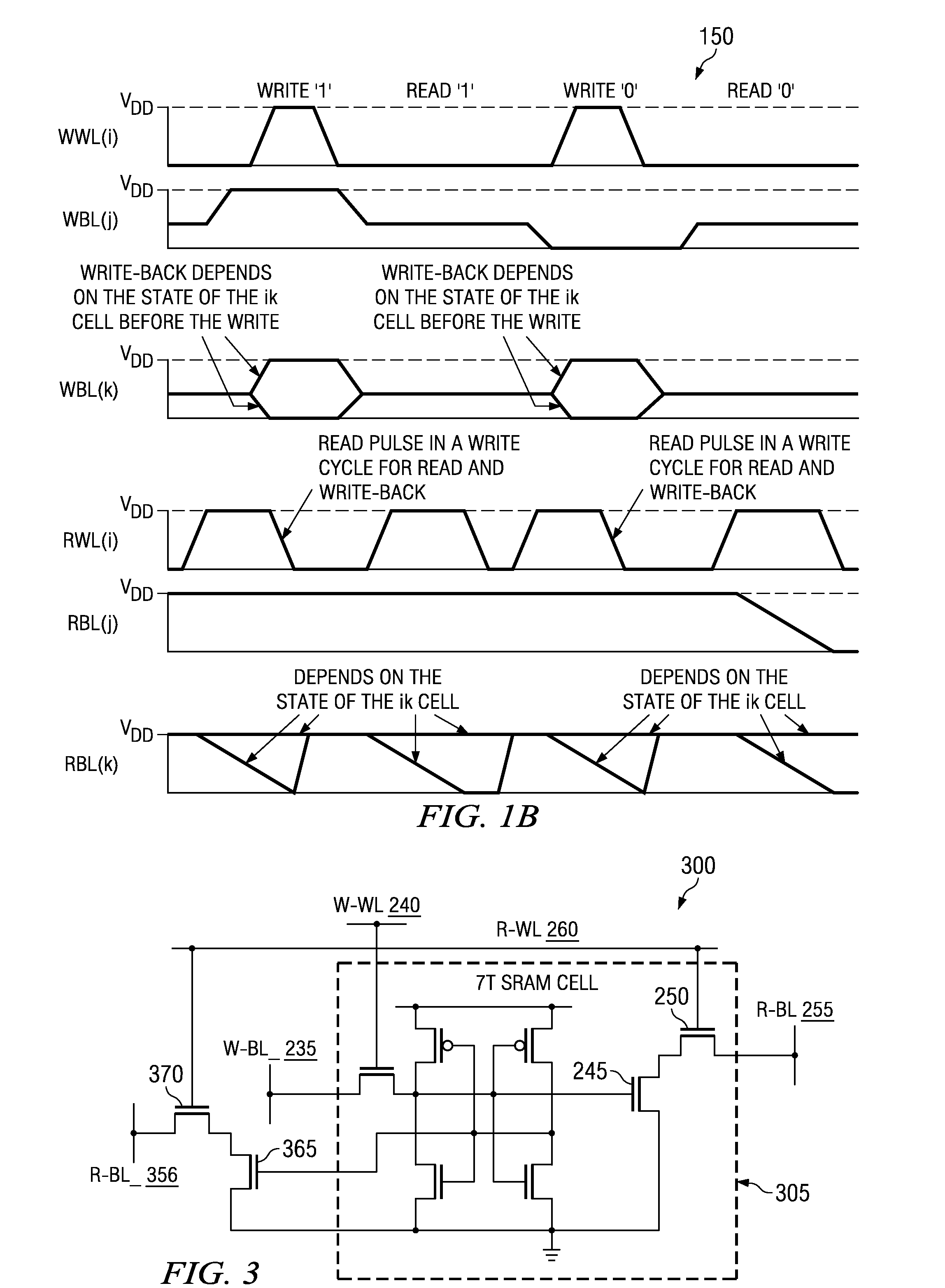Seven transistor SRAM cell
- Summary
- Abstract
- Description
- Claims
- Application Information
AI Technical Summary
Benefits of technology
Problems solved by technology
Method used
Image
Examples
Embodiment Construction
[0025]The present disclosure provides embodiments of a 7T SRAM cell that may be employed to mitigate at least a portion of the problems associated with scaling to smaller geometries. The 7T SRAM cell employs a single-sided WRITE and a single-sided READ, wherein the single sided READ uses a gain cell type output. In addition to providing a smaller footprint area than an 8T SRAM cell, this configuration maintains an adequate static noise margin (SNM) as well as provides robustness for WRITE (Vtrip), good read current capabilities (Iread) and low leakage current (IDDQ).
[0026]FIG. 1A illustrates an integrated circuit 100 including an SRAM array 101 as provided by one embodiment of the disclosure. The SRAM array 101 is shown having memory cells 105 wherein each cell is a 7T SRAM cell employing single and separate Write and Read word lines as well as single and separate Write and Read bit lines. The SRAM array 101 includes a plurality of Write word lines WWL(1)-WWL(n) and corresponding Re...
PUM
 Login to View More
Login to View More Abstract
Description
Claims
Application Information
 Login to View More
Login to View More - R&D
- Intellectual Property
- Life Sciences
- Materials
- Tech Scout
- Unparalleled Data Quality
- Higher Quality Content
- 60% Fewer Hallucinations
Browse by: Latest US Patents, China's latest patents, Technical Efficacy Thesaurus, Application Domain, Technology Topic, Popular Technical Reports.
© 2025 PatSnap. All rights reserved.Legal|Privacy policy|Modern Slavery Act Transparency Statement|Sitemap|About US| Contact US: help@patsnap.com



